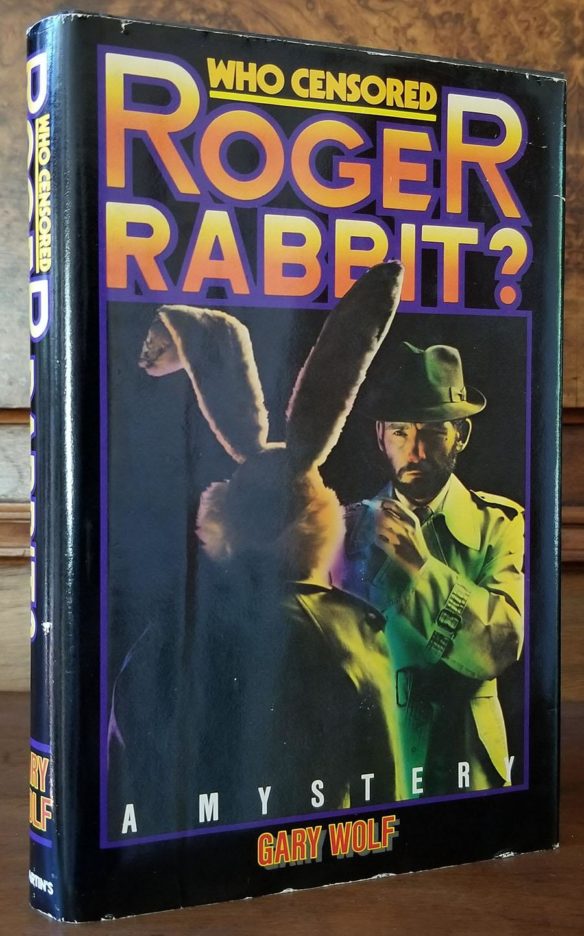(1) CONFICTION FINAL FAREWELL PARTY. The 1990 Worldcon will host a bash at Glasgow 2024.

(2) TIANWEN RESURFACES. [Item by Ersatz Culture.] From the Red Star News on July 26: 面向全球发出邀请:首届“天问”华语科幻文学大赛在蓉举办新闻发布会. Google Translate: “Invitation to the world: The first ‘Tianwen’ Chinese Science Fiction Literature Competition held a press conference in Chengdu”. [Via SF Lightyear.]
Relevant bit via Google Translate, my emphasis:
The first “Tianwen” Chinese Science Fiction Literature Competition is chaired by Wang Meng, a famous contemporary Chinese writer, scholar, former Minister of Culture, and winner of the national honorary title of “People’s Artist”. At the same time, the competition has established a review committee with Alai, vice chairman of the China Writers Association, as chairman, Su Tong, member of the presidium of the China Writers Association, Liu Cixin, director of the Science Fiction Literature Committee of the China Writers Association, and relevant members of the World Science Fiction Association Brand Protection Committee as vice chairmen, who are fully responsible for the selection of entries.
I don’t know whether “relevant members” (plural) could just as easily be “relevant member” (singular), given Chinese (and Japanese) don’t generally make distinction.
(3) CAN’T PHONE HOME. “A Smartphone Can’t Help You Now: How Horror Movies Solve Their Cell Problem” in the New York Times. (Paywalled, unfortuntately.)
A cellphone lies in a rustic Airbnb, smashed by an intruder. Then, when another is procured, a faulty connection interrupts a call to 911.
A navigation map on a smartphone glitches as a driver plunges deep into the woods.
Criminals on a kidnapping job are ordered to surrender their phones “to be completely certain that you can’t be tracked.”
An exasperated partyer in rural Ontario wonders aloud to a member in his group, “How long is it going to take for you to realize there’s no reception out here?”
These are some of the ways that recent horror movies have gotten around what is at this point an age-old problem: the cellphone. In working order, they can render predicaments more solvable and certain situations easier to escape — potentially. Before the late ’90s, there was little need to make such a show of connectivity failure. Lines would go down or get cut, sure, but isolation in the age before mass cellphone usage was easier to come by and therefore easier to believe onscreen. Back then, the tropes didn’t have to trope so hard.
Then came the cell, and movies like “House on Haunted Hill” (1999) and “Jeepers Creepers” (2001) featured characters realizing they were holding useless plastic flip-bricks as their situations grew hairy. (In the former, the possessed house kills the signal before any of its inhabitants; in the latter, young adult siblings bicker over a low battery notification after witnessing what turns out to be a winged demon.) With smartphones, there was even more to neutralize, like GPS maps and internet searches. Movies taking pains to explain away cellphones were so prevalent that by 2009, I could collect more than 40 clips for a supercut exploring this development in the previous decade or so….
At least you can watch the supercut free on YouTube:
(4) STOLEN VALOR – AND MONEY. Nature says, “Hijacked journals are still a threat — here’s what publishers can do about them”.
Late last year, Liverpool University Press (LUP), a UK-based publisher, received a concerning e-mail. A prospective author had contacted the editors asking how much it would cost to publish an article in one of its journals, the International Development Planning Review (IDPR).
This raised suspicions among the editors, because the IDPR doesn’t charge any publication fees. The message also contained a link to the IDPR’s website — but the URL was incorrect. When the editors clicked it, they discovered a counterfeit website with the journal’s branding and an e-mail address that they’d never seen before. The journal had been hijacked.
Hijacked journals are a form of cybercrime in which a malicious third party creates a cloned website to impersonate a legitimate publication. The forgery replicates the original journal’s important details, from its title to its archive and international standard serial number, a code that identifies the publication. The purpose of a hijacking is to generate money quickly by charging illegitimate article-processing fees to unsuspecting researchers. Although the hijackers often publish papers that have been submitted to the fraudulent site, these works are not peer-reviewed nor considered legitimate.
A blogpost in April presented the challenges that LUP faced as a result of the hijacking, including the burden placed on its small editorial team. The intention, according to Clare Hooper, director of journals publishing at LUP, is to alert researchers to the “growing problem of copycat journal websites”….
(5) WRITER BEWARE. Victoria Strauss offers advice about “Evaluating Publishing Contracts: Six Ways You May Be Sabotaging Yourself” at Writer Beware. The intro and first of six bullet points are excerpted below:
These issues are as relevant now as they were years ago, if not more so. I hear all the time from writers who’ve been offered seriously problematic contracts and are using various rationalizations to convince themselves (sometimes at the publisher’s urging) that bad language or bad terms are not actually so bad, or are unlikely ever to apply. For example, I recently evaluated a contract with multiple questionable terms, including net profit royalties and a life-of-copyright grant without adequate provision for termination and rights reversion; the writer shared my concerns with the publisher, which responded with a long explanation for why none of it was actually a problem. The writer chose to sign the contract.
Here are my suggestions for changing some potentially damaging ways of thinking.
Don’t assume that every single word of your contract won’t apply to you at some point. You may think “Oh, that will never happen” (for instance, the publisher’s right to refuse to publish your manuscript if it thinks that changes in the market may reduce your sales, or its right to terminate the contract if it believes you’ve violated a non-disparagement clause). Or the publisher may tell you “We never actually do that” or, more cagily, “We’ve never actually done that” (for example, edit at will without consulting you, or impose the termination fee that’s the price of getting out of the contract early). But if your contract says it can happen, it may well happen…and if it does happen, can you live with it? That’s the question you need to ask yourself when evaluating a contract….
(6) FREE READ. To encourage subscriptions, Sunday Morning Transport has posted “Artists and Fools”.
For July’s fourth, free, story, Paolo Bacigalupi brings us a tale from the world of his new fantasy novel, Navola. We hope you enjoy meeting Pico the artist as much as we have!
(7) ROBERT BLOCH OFFICIAL WEBSITE UPDATE. Two essay contributions from Bloch historian/bibliographer, Randall D. Larson, have been added to the Robert Bloch Official Website’s “By Others” page.
- The Cthulhu Mythos Fiction of Robert Bloch – Randall D. Larson details Bloch’s body of work involving Lovecraft’s mythos
- On “The Feast in the Abbey” – Randall D. Larson examines Bloch’s story and the influence of Lovecraft
(8) GENRE LODGINGS. This 2022 article from Travel & Leisure lets you visit “9 Magical ‘Harry Potter’-themed Airbnbs Around the World” – photos at the link. One of them is:
The Common Room: British Columbia, Canada
Are you a full-fledged Gryffindor? Come stay in The Common Room, modeled after the Gryffindor common room at Hogwarts. The home comes with all the amenities one would need for an ideal getaway, including a kitchen, lofted bed, and Wi-Fi, but it also has the added perk of looking just like the movie set, with framed photos of Snape, a magic broom, and of course, plenty of Harry Potter DVDs for a night in. Book it now starting at $148/night.
(9) MEMORY LANE.
[Written by Cat Eldridge.]
1944 – The Canterville Ghost.
Eighty years ago, The Canterville Ghost premiered. It was somewhat loosely on the 1887 short story by Oscar Wilde of the same name as published in two parts in The Court and Society Review, a British literary magazine only published between 1885 and 1888. That wasn’t unusual as a lot of those literary and not so literary magazines failed after a few months, and not an insignificant number lasted just a single issue.
I should note before we go any further that I stopped counting when I found at least nine films had been made of this tale, and at least two series. I’ll only mention one of these, a film in the Nineties with a certain naturally-bald Starship Captain, yes Patrick Stewart, given long flowing hair and a beard as the ghost. So how could I resist showing you him in that role?

The first version is a film very much of its time. The plot had Charles Laughton as a ghost doomed to haunt an English castle, and Robert Young as his distant American relative called upon to perform an act of bravery to redeem him. No one would get hurt in the story, no surprise at all.
Yes, there is redhead here as well in the winsome form of the six-year-old Margaret O’Brien who was born Angela Maxine O’Brien. O’Brien is of half-Irish and half-Spanish ancestry. She was one of the most popular child stars in cinema history and would be honored with a Juvenile Academy Award as an outstanding child actress the year this film came out.
I was looking for a particularly cute photo of her with Simon and I think that I indeed found in it in this one of her sitting on the stairs with him off to the right also sitting. What do you think? Am I right?

Here she plays the Lady Jessica de Canterville, Robert Young is Cuffy Williams and Charles Laughton is the ghostly Sir Simon de Canterville.
The motion picture was shot at Metro-Goldwyn-Mayer Studios with outdoor shots filming done at Busch Gardens in Pasadena, California. Busch Gardens was the almost forty acres of gardens owned by Adolphus Busch. The Hollywood film industry would use the gardens in many films shot in the Thirties onward such as Dr. Jekyll and Mr. Hyde, Frankenstein and Gone With the Wind.
It was directed by Jules Dassin with additional directing by Norman Z. McLeod who went uncredited, The only film I know I’ve seen by Dassin is Night and the City, a stellar British noir work. Now the screenplay was by Edwin Blum who went on to script Stalag 17, an entirely grimmer affair. It was produced by Arthur Fields, just one of three films that he did.
No idea how it did as I can find no box office or production costs for it.

(10) COMICS SECTION.
- Breaking Cat News recommends reading to beat the heat.
- Broom Hilda finds a reason to worry about cons.
- Eek! encounters a knight who never surrenders. (Not named “The Knight Who Says ‘Eek!’” – a missed opportunity.)
- Free Range illustrates how some parenting techniques go way back.
- Red and Rover achieves a childhood dream – oops!
- The Flying McCoys has a monster complaint.
- The Argyle Sweater remembers these dud video games.
- The Brilliant Mind of Edison Lee hates snacks with automatic updates.
(11) DEADPOOL DIES? No sooner does his movie make a mint than Marvel Comics announces Deadpool’s daughter, Ellie, will take over as Deadpool following Wade’s death this October in Deadpool #7!
Deadpool is dead—long live Deadpool! It was previously revealed that Wade Wilson will meet his end at the hands of new super villain Death Grip this October in DEADPOOL #6. Following this shocking turn of events, his daughter, Ellie Camacho, will step up as the all-new Deadpool starting in November’s DEADPOOL #7! Just revealed at the Diamond Retailer Lunch at San Diego Comic-Con, Ellie’s new role is the latest twist in what’s been writer Cody Ziglar’s roller coaster of a run. To welcome the new Merc with a Mouth, Ziglar will be joined by guest artist Andrea Di Vito and co-writer Alexis Quasarano in her Marvel Comics debut.
Wade has fallen, and his daughter Ellie has taken up the mantle! Taskmaster continues her mercenary training, but what she really wants is vengeance. And to get that, she’ll need Princess’ help. For more information, visit Marvel.com.
DEADPOOL #7
Written by CODY ZIGLAR & ALEXIS QUASARANO. Art by ANDREA DI VITO.
Cover by TAURIN CLARKE

Variant Cover by MARK BAGLEY

(12) SPOILER, MAYBE? About a Deadpool & Wolverine cameo. “Blake Lively Recalls Meeting Ryan Reynolds on Set of ‘Green Lantern’”. No excerpt. Because spoiler, maybe.
(13) IT IS HIS DOOM. The Hollywood Reporter picks up more news at San Diego Comic-Com: “Robert Downey Jr. Back as Doctor Doom for Two ‘Avengers’ Movies”.
Robert Downey Jr. is set to return to the film franchise as classic Fantastic Four villain Doctor Doom for the newly titled Avengers: Doomsday, due out in May 2026, and Avengers: Secret Wars, bowing in May 2027. Kevin Feige also officially confirmed the Russo bros. will direct these next two Avengers films.
Downey became one of the biggest movie stars in the world after launching the Marvel Cinematic Universe with 2008’s Iron Man. His work helped propel the MCU to become the highest grossing film franchise of all time — and he was handsomely rewarded, earning $50 million paydays in the process. Downey retired from the role of Tony Stark/Iron Man with 2019’s Avengers: Endgame, in which his character died saving the universe. It’s been a challenge for Marvel to find a protagonist to replace the large hole left by Downey, giving Saturday’s announcement all the more meaning.
“New mask, same task,” Downey told the audience from the stage.
Downey was revealed in an almost religious ceremony as about two dozen olive-robed men with metal, Doctor Doom-like masks walked on stage, joining Feige and the Russo Bros. “If we’re going to bring Victor Von Doom to the screen — he is one of the more complex characters in all of comics … this is potentially one of the more entertaining characters in all of fiction,” said Joe Russo. “If we’re going to do this … then we are going to need the greatest actor in the world.”…
(14) PEACEMAKER RELOADED. “’Wynonna Earp Vengeance’ Reunion Movie Trailer, Streaming Soon on Tubi” – TVLine supplies the introduction:
A frightful phone call and a deadly threat lures Peacemaker’s wielder back to Purgatory in the full trailer for Wynonna Earp: Vengeance, the 90-minute reunion special coming “soon” to Tubi.
(15) HMS SURPRISE. While in town for Comic-Con, Naomi Novik visited the Maritime Museum of San Diego.
(16) CITIUS, ALTIUS, FORTIUS, MINIONUS. “Minions get into the Olympic spirit during Opening Ceremony” from NBC Sports. The video can only be viewed on YouTube – bastards!
[Thanks to John King Tarpinian, Chris Barkley, Cat Eldridge, Ersatz Culture, SF Lightyear, Rich Lynch, SF Concatenation’s Jonathan Cowie, Steven French, Kathy Sullivan, Teddy Harvia, Mike Kennedy, and Andrew Porter for some of these stories. Title credit belongs to File 770 contributing editor of the day Daniel Dern.]



